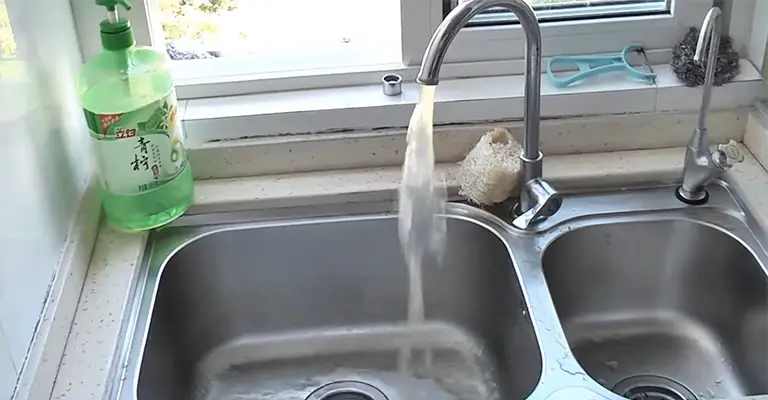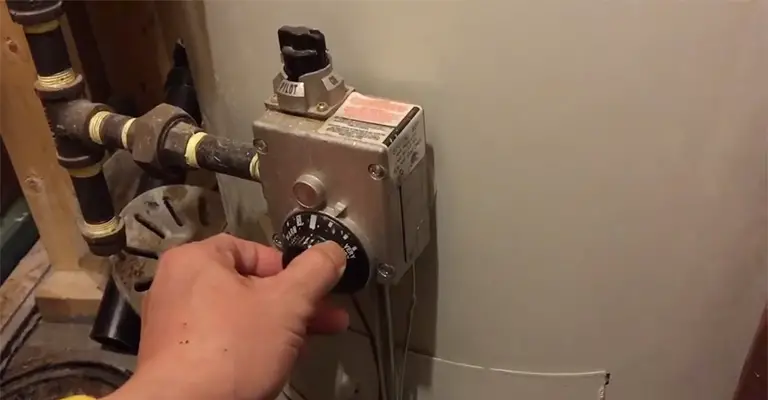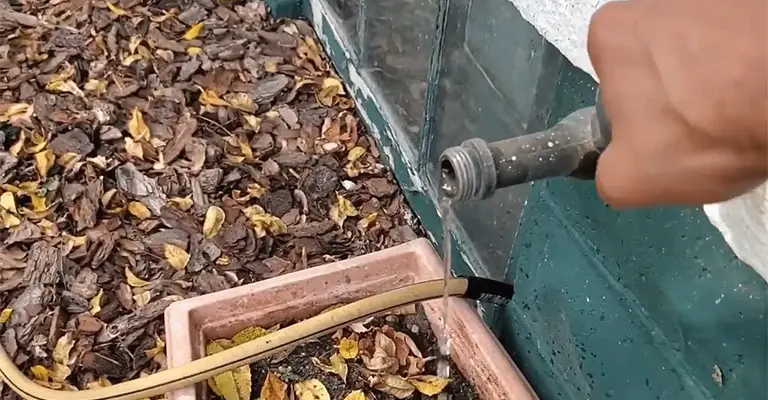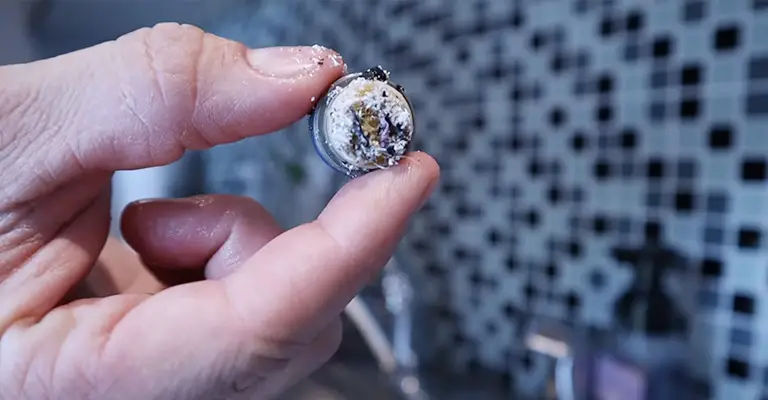Your water pipes are the most vulnerable part of your plumbing system. There is no end to the issues arising from water pipes, whether they clog or burst due to freezing water.
If the water flows slowly from your bathroom sink faucet, it can be quite frustrating. You should check all possible causes of this to determine why it’s happening.
It is possible to extend the durability of these items with a couple of maintenance hacks. Cleaning sediment out of your water lines is a simple way to do this.
Make sure this slow flow is not caused by one faucet by opening the water lines of all of your faucets. You can see if the water flow is reduced when you pass through the kitchen and bathroom faucets.
Despite its purest appearance, the water that runs into your house is not always pure. You may find dirt, soil, or clay embedded in it. These elements may damage your pipes and the connected appliances as they accumulate.
The first step is to clean your pipes and P-traps connected to your drains. In the following step, you will determine the best method to clean the remaining section of pipes.
If you cannot afford to have your water lines cleaned every few months, that is perfectly fine. This detailed guide gives how to clean your water lines like a pro by yourself.
What Is Sediment?

You can find sediment in the interior of your hot water pipes as a residue compound. Sediment may be present in the pipes based on the type of pipes in your home.
It is common for rust to accumulate inside metal pipes and settle near the bottom. With time, the sediment of rust builds up, resulting in a backup of water flow.
In addition to sediment, hard water minerals may also accumulate inside pipes after they are deposited. Your water system needs to stay flowing smoothly so that you clean the sediment out of your pipes, regardless of the type of sediment.
How To Get Rid Of Sediments From Your Water Pipes?
A preliminary step in removing sediments from your water pipes is relatively simple. The following steps will help you:
1. Flushing Out Hot Water Pipes With Cold Water

Cold water can easily be used to flush sediment out of hot water pipes. Follow the steps below to get started:
It is important that you shut off the water system and turn off the water heater before doing anything else. You will need to place the end of the force on the floor drain after inserting the water hose into the heater’s drain.
Check to see if the hot-water valve and cold-water valve are turned off. Water from the cold-water valve goes to the heater to be heated. By forgetting this step, the water will continue to flow in and out of the heater.
Not only will this disrupt the operation, but it will also result in a huge water bill. You should then turn on a faucet to avoid forming a vacuum in your pipes
The following step is to turn on the heater’s drain valve to flush out the sediment. To ensure the water flows smoothly through the pipes, it should rush through them as long as possible. You will make sure that every inch of sediment is removed.
Also, check if the water from the pipe is flowing down the drain before starting this procedure. That is necessary for the entire process to work.
Once this is done, you can remove the hose and turn the valves and the water heater back on.
2. Flushing Sediments Out Of Other Pipes

Before this step, sediments were flushed from hot water pipes. In addition to those pipes, there are others throughout your home as well. In addition, sediment accumulation is equally likely in both.
In comparison with these pipes, cleaning them is easier. You simply have to follow these steps:
- Make sure three to four cold faucets are running.
- Ensure that the water is running through it for at least 20 minutes.
- While this process is being performed, ensure the water pressure is as high as possible.
- High water pressure must be used to flush all sediment out of the pipes.
The exact process can be repeated after 30 minutes if you still feel that some sediment is left. It is recommended to turn on the garden hose simultaneously at its maximum speed if you want to speed up the process.
How To Get Rid Of The Sediments From The Aerators Of The Faucets?

Aside from the water pipes, it is also important to clean the faucets. Similarly, the aerators of faucets can develop sedimentary deposits.
As a result of the mesh in the aerator, unwanted sediment tends to accumulate. Cleaning it is as follows:
- In the first step, you should remove it from the faucets. A wrench is required to do that.
- Afterward, you should wash the aerator with water to remove any sediment. After that, you can screw it back on the faucet.
- Sediment accumulated inside the aerator will likely enter the pipes when you remove it.
- When reconnecting the aerator to the faucet, it is recommended that you clean the supply pipes as well. You will accomplish this by running high-pressure water through these pipes without attaching aerators.
- When you see clean water flowing out, it indicates that all sediments have been removed.
As long as clean water flows out, all sediment has been removed. Following that, you can attach the aerator back to the faucets the same way it was before.
How Much Does It Cost?
Depending on whom you hire and how long it takes to complete something, the cost of something varies. A professional typically charges between $50 and $200 to clean sediment out of your water lines.
Additionally, you may need to pay $100 to $200 to have your boiler lines cleaned. Some people are without boilers, so this might not matter to them.
Other Recommended Maintenance
The pipes inside the walls should be inspected after the sediment has been flushed out of the water lines.
It is possible to cause damage to a line if pressure is built up when backwater is pushed or blown through it, as happens when dealing with water. To ensure your peace of mind, following the completion of this project, you should inspect the walls.
In your home, you may have water that is colder than usual. It may be that there are problems with the hot water heater. If you plan to test the water heater, use a digital multimeter.
In closing, examine how to prevent calcium buildup on your faucets as this project draws closer. If you have a slow water flow, fixing it this way can save you both time and money.
Options To Prevent Excessive Sedimentation
It is common for specific areas and the water within them to contain a lot of sediment. Additionally, you might have noticed that cleaning the pipes and flushing out sedimentation is quite a laborious process. Two options exist if you want to simplify the process:
Used Household Cleaners
Sedimentation is sped up with the use of household cleaners, whether they are commercial or homemade.
It must be noted, however, that they are much less efficient than whole-house filters and must be cleaned manually. Its only benefit is that it makes the process more efficient.
Get A Whole House Filter
An appliance that reduces sediments flowing into your pipes is described as a whole-house filter. It’s a good solution to excessive sedimentation because of its built-in mesh that prevents literally every kind of sediment.
When Should I Call A Professional?
If you have a plumbing project to tackle at home, hiring a professional plumber is a great idea. When it comes to projects like cleaning sediment out of your water lines, rely on an experienced professional licensed plumber for guidance.
Contact your local home inspection team if you need a plumber for a residential project. You shouldn’t make a mistake when dealing with plumbing and accidentally destroy the water lines within your walls as a result.
Final Words
It is exhausting to clean your pipes every now and then, but it is exceptionally vital to keep them free of sediments. Your pipes can’t function efficiently and be durable without regular maintenance and inspections.
As a result, they will need to be replaced more frequently, increasing their cost. Moreover, sediments in the water lines can affect the functioning and efficiency of significant water appliances.






